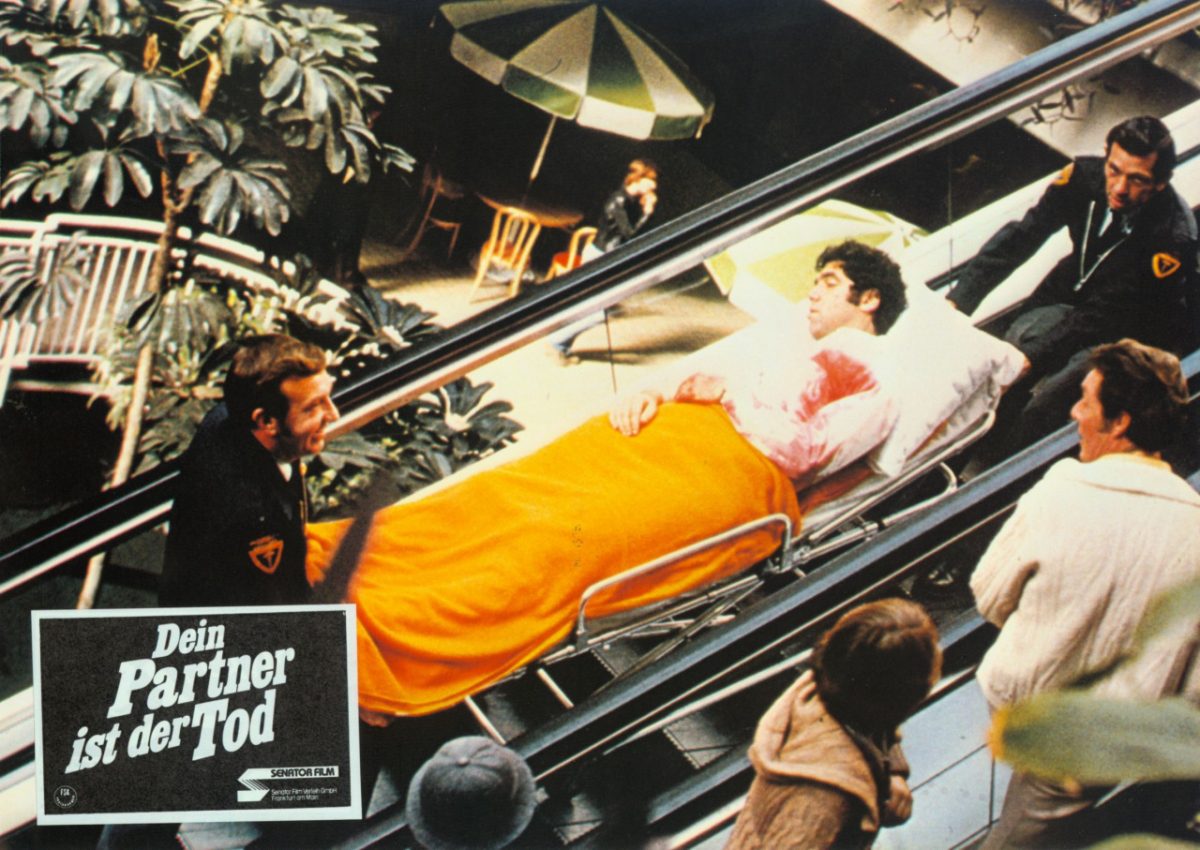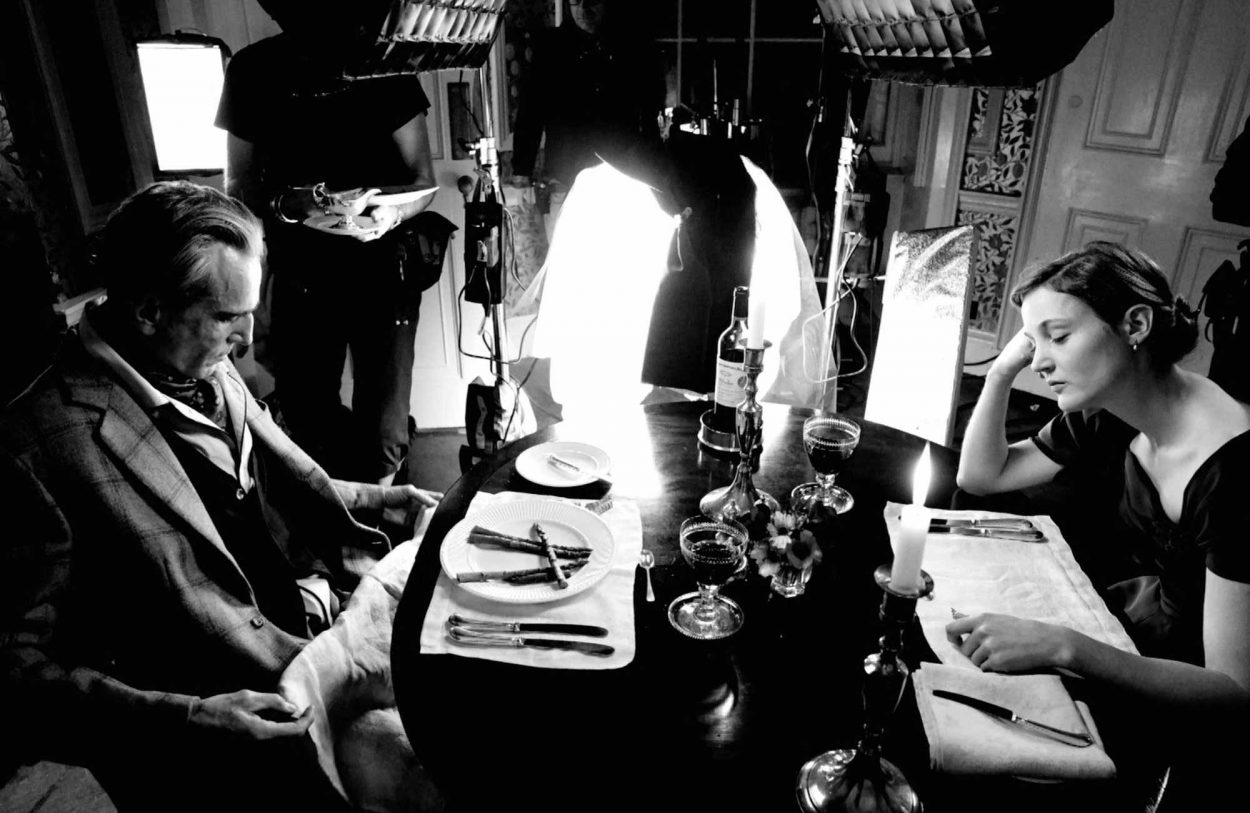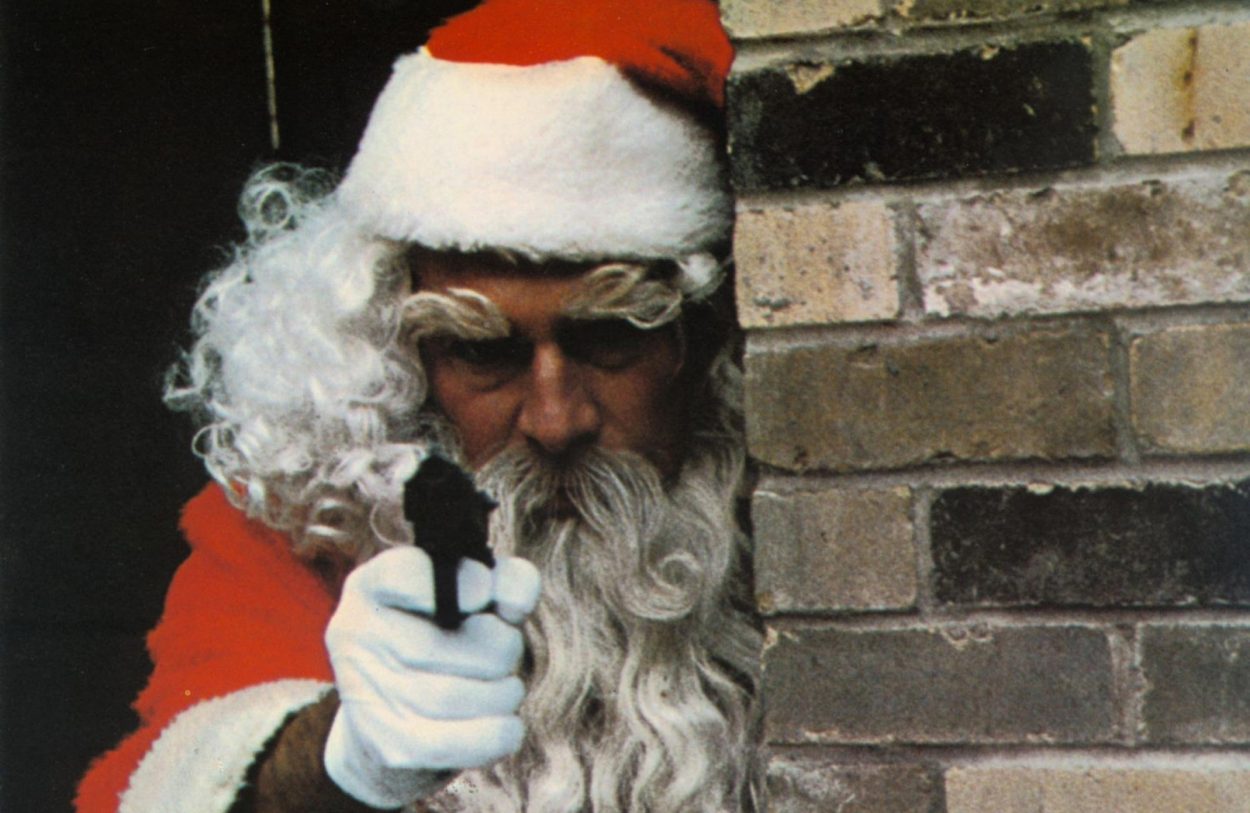Ahead of the New Beverly’s screenings of The Silent Partner, Kim Morgan talks to iconic American actor Elliott Gould about starring in a very Canadian thriller.
Kim Morgan: Thank you for talking with me about The Silent Partner. The theater is showing it on Christmas Eve…
Elliott Gould: I love that you’re doing that. It’s great.
KM: It’s a holiday favorite and a magnificent movie any time of the year. Daryl Duke is such a provocative, unique filmmaker – dark and funny. Payday is something of a masterpiece and so is The Silent Partner. How did you get involved with Daryl Duke and this project?
EG: Daryl was wonderful. Daryl was interested in me doing it. I read the script and the book. It’s an interesting book – “Think of a Number” – it was Scandinavian. And Curtis [Hanson] bought it or optioned the book and wrote the screenplay. I recall it took me a long time to commit to it. I’m slow, you know, I try to be deliberate. Or, on the other hand, I can be extremely impulsive and go too fast. Daryl and I were quite friendly, but I remember meeting with Daryl in the boardroom at the agency ICM, and it was just Daryl and me. And Daryl said to me: “I don’t want any of you in the picture.” And I thought, A. I’m not committed to your picture yet and who do you think I am? Who are you talking about?” So you have a reference of work I’ve done before? I mean, this is going to be something new for me. And I’m going to be something, hopefully, new enough for it. But I did adore Daryl Duke and we had a very good work relationship. We talked about doing other things together. Daryl was a friend.
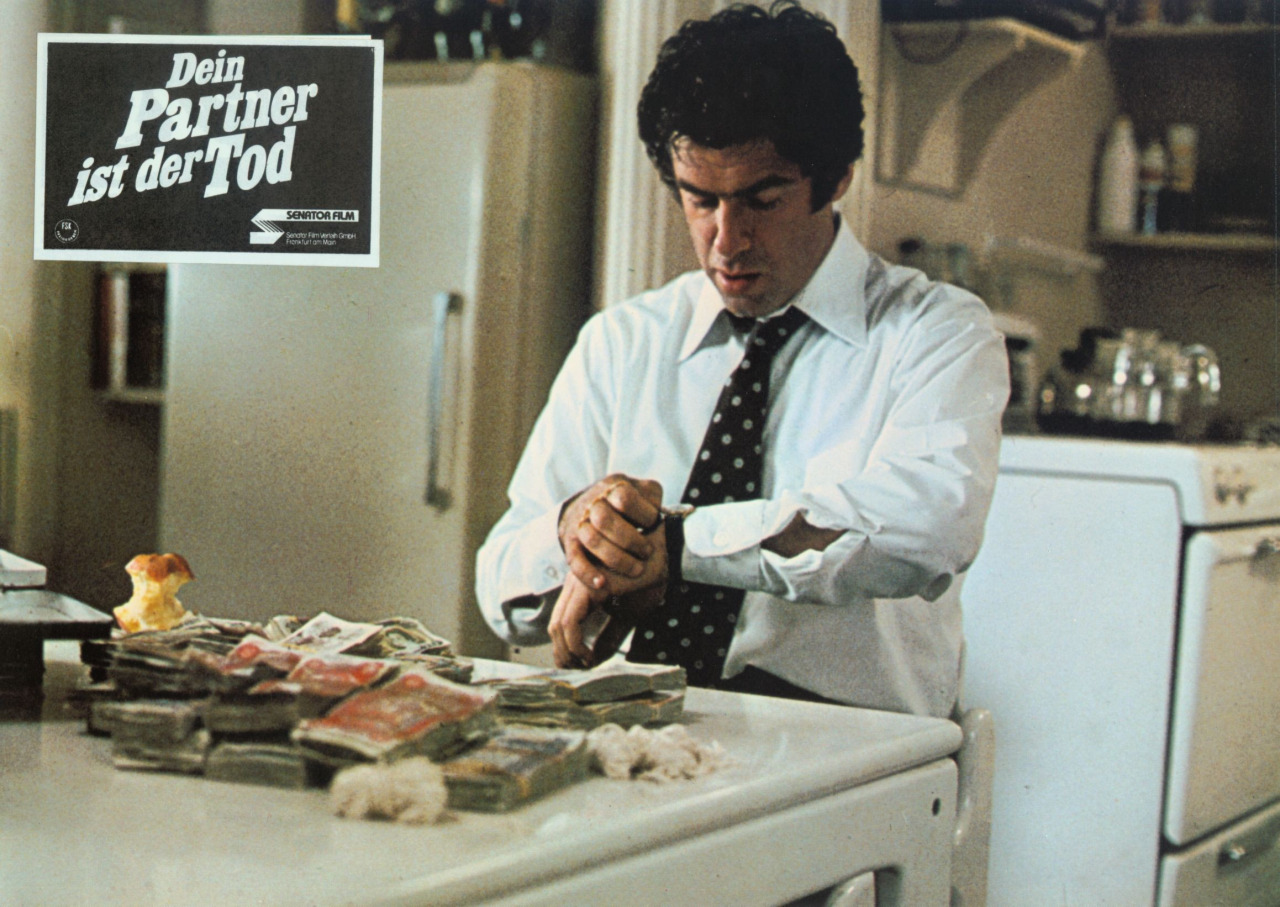
KM: There are also so many excellent collaborators on this project… as well as being beautifully directed and acted, and it’s so wonderfully shot…
EG: Yes. You’ll find this interesting: Late evening in [an office] in Toronto, I was looking out the window with [cinematographer] Billy Williams, who had done Women in Love and then went on to do Gandhi – he was a great cinematographer. And I was looking out the window with him, and the sky was orange like it happens in the summer, and I knew we had a picture, because we were looking out of the window at the same time at the same light. Billy Williams is first class.
KM: And the score by Oscar Peterson…
EG: I met Oscar Peterson in London at a place called the White Elephant, in 1978, when I had gone on to start to make a remake of Hitchcock’s The Lady Vanishes. I was with Herb Gardner, the writer who wrote A Thousand Clowns and I’m Not Rappaport. I saw Oscar, and I said to him, “Are you validated? This is the first picture that you did and was it worth it?” And Oscar said, “Yes.” He was very happy with it and that made me feel good.
KM: Also John Candy…
EG: We introduced John Candy and one of the funny things is, his name in the script was “Simonson.” And the scene where the police came in to see what was going on with the robbery, I said “Simonson.” And I thought he should have a first name so they let me give him one. I dubbed him “Raoul.” “Raoul.” It was very intense in terms of where my character’s head was at, that scene. And when I’d say “Raoul” I couldn’t stop smiling because it was so funny.
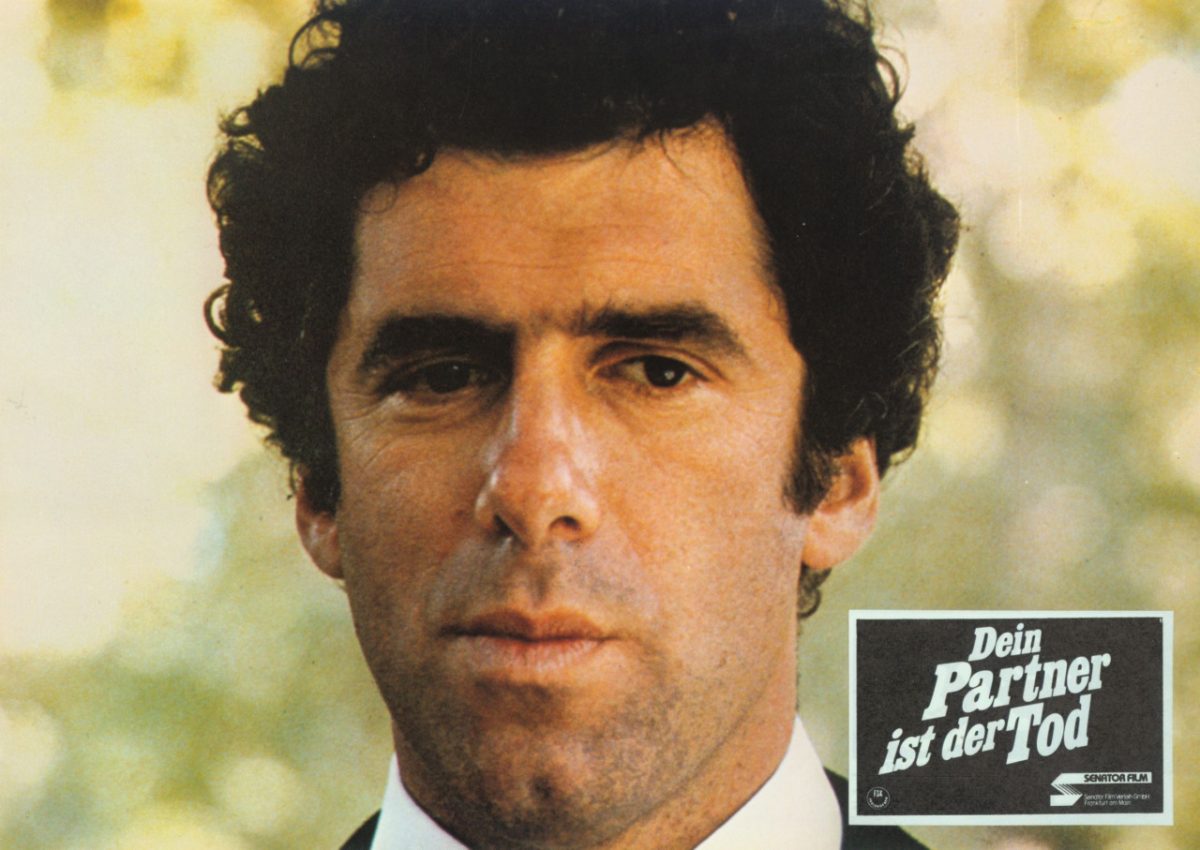
KM: It’s a tense film, the action is unique – the scene through the mall with Christopher Plummer in the Santa Suit – as well as other scenes both violent or just at the office or at a party, they’re human and scary and, again, funny. Duke has a sly sense of humor …
EG: That’s interesting. Daryl used to do television; I think he used to do Steve Allen shows…
KM: I was reading early reviews of the movie when it came out, Roger Ebert in Chicago for instance, and he loved the movie and commented that it kind of came from nowhere. The movie didn’t show on enough screens. It deserved better.
EG: People were trying to drive a harder deal with Paramount and what a work like that would need, in terms of stimulating an audience, would be distribution and money to spend on prints and advertising… So I know that it played in Chicago… It played in South America. I had people from Argentina who said that they liked me so much that I could be with their horses. And horses mean a lot to people in Argentina. It was a good picture. It was different.
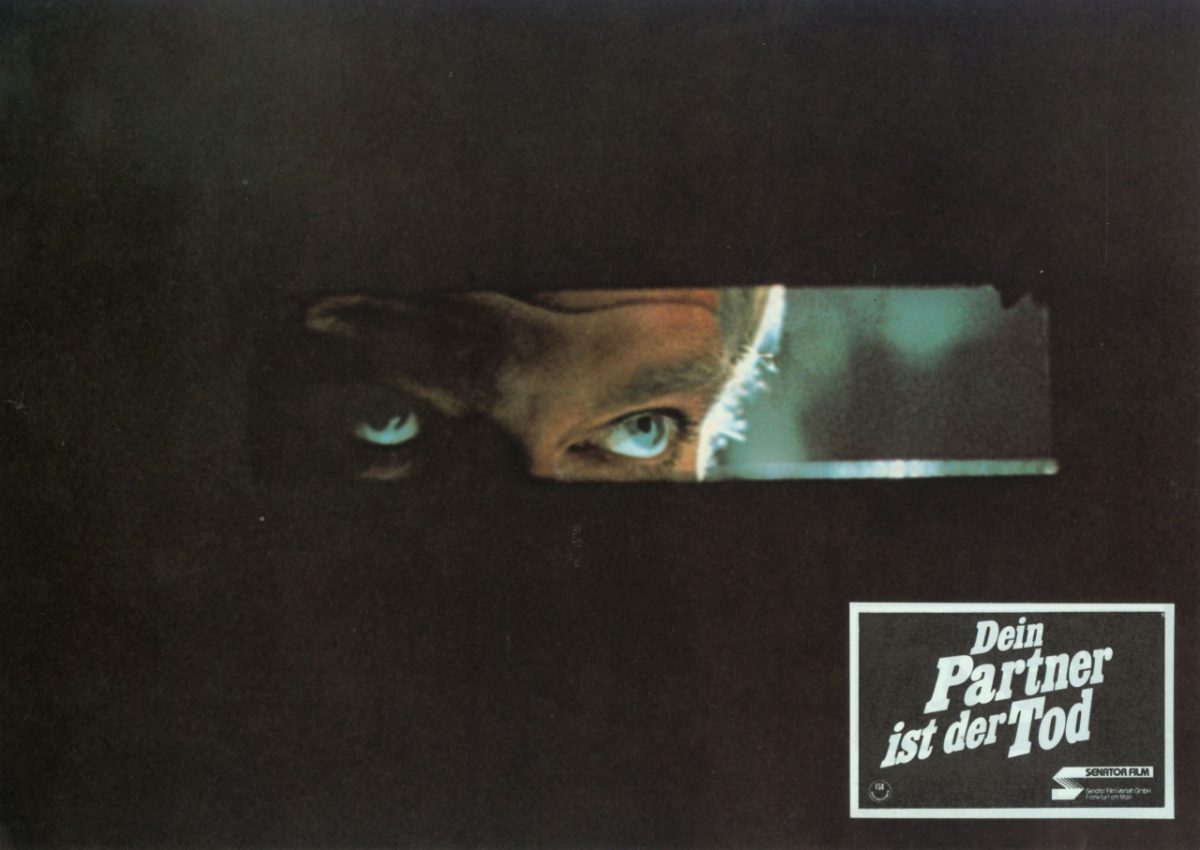
KM: The movie, its twists and turns, is rightfully compared to Alfred Hitchcock. You mentioned Hitchcock earlier…
ER: I met Mr. Hitchcock in 1977, when I was co-hosting a prime time network presentation show – the Photoplay Awards. After our last camera rehearsals the management came to me and said, “Alfred Hitchcock is here to collect his award, can he sit in your room?” My room was the closest to the stage. And I said, “Well, of course.” And so I went back to my room and there’s Alfred Hitchcock. This was the first time we met. And this was May of 1977 because I had finished Capricorn One, and I was going off to do The Silent Partner. And so I walked into my room and there was Alfred Hitchcock with an assistant and I said to him, “Are you going to make another film?” And he said to me, “I’m toying with one now.” And then he leaned closer to me and he said, “I said, I’m toying with one now but I don’t know if the audience still wants my fantasy.” To which I responded, “Without a doubt.” And then we talked a little bit about The Silent Partner, and he knew it. I went off to prepare to do The Silent Partner and I started to write to him. I wrote Mr. Hitchcock a couple of cards because I knew I wanted to keep that in mind. I wanted it to be a sort of Hitchcockian story. He was a perfect reference for The Silent Partner. And then, coincidentally, the next year, I did The Lady Vanishes with Angela Lansbury and Cybill Shepherd – that’s when I started to communicate with Mr. Hitchcock and got the chance to spend some real quality time with him.
KM: Did you bring any of your earlier talk with Hitchcock into the movie? With Duke or Curtis Hanson?
EG: No, no. Curtis and I barely talked. We played liar’s poker and Daryl and I were quite friendly. I was not happy that he was taken off the picture. He wouldn’t do the beheading scene. I called Daryl in Vancouver and he said that what he stopped his work on it and he was a minute away from what he wanted.
KM: Really?
EG: Well, it was him and Curtis Hanson until post-production when they took Daryl off the picture so they could shoot the beheading, which was never in the script.
KM: They took him off for that?
EG: No, the picture was done… I don’t know. I had never talked politics, that’s just what happened. Daryl Duke was great. I don’t think he wanted to shoot the beheading … they took him off for whatever reason… I thought that Daryl did an almost perfect job with the picture. And then I said, “I have to see this for myself because I don’t want my head being fucked with.” So on my own dime, I flew from Toronto to Vancouver to see Daryl’s print and they were right in the same place. And Daryl would not compromise. I got back on the road and went to Europe to work with David Niven and Gil Taylor, the cameraman, to do that picture [Escape to Athena].
KM: So … the beheading scene, who’s idea was it? Someone had the idea to put that scene in there to make the film more shocking and add extra impact?
EG: Maybe. I don’t know. I won’t speculate. All I know is that I did the picture with Daryl Duke and then in post-production, I did what they asked me to do. And then I flew out to see what Daryl’s version was, and they were close to the same. But they wanted that thing in it… I was not happy about it. Daryl really did a wonderful job… I mean, I really believe in loyalty. And perhaps that’s in terms of karma, that’s one of the reasons the picture didn’t go further because of that kind of… I can’t think of the word, there’s a word, it’s an interesting word and maybe I’ll flush it out since you and I are friendly. I don’t know what the word is, but it’s not so good.
KM: That’s curious because the picture reflects some of these things you’re talking about…
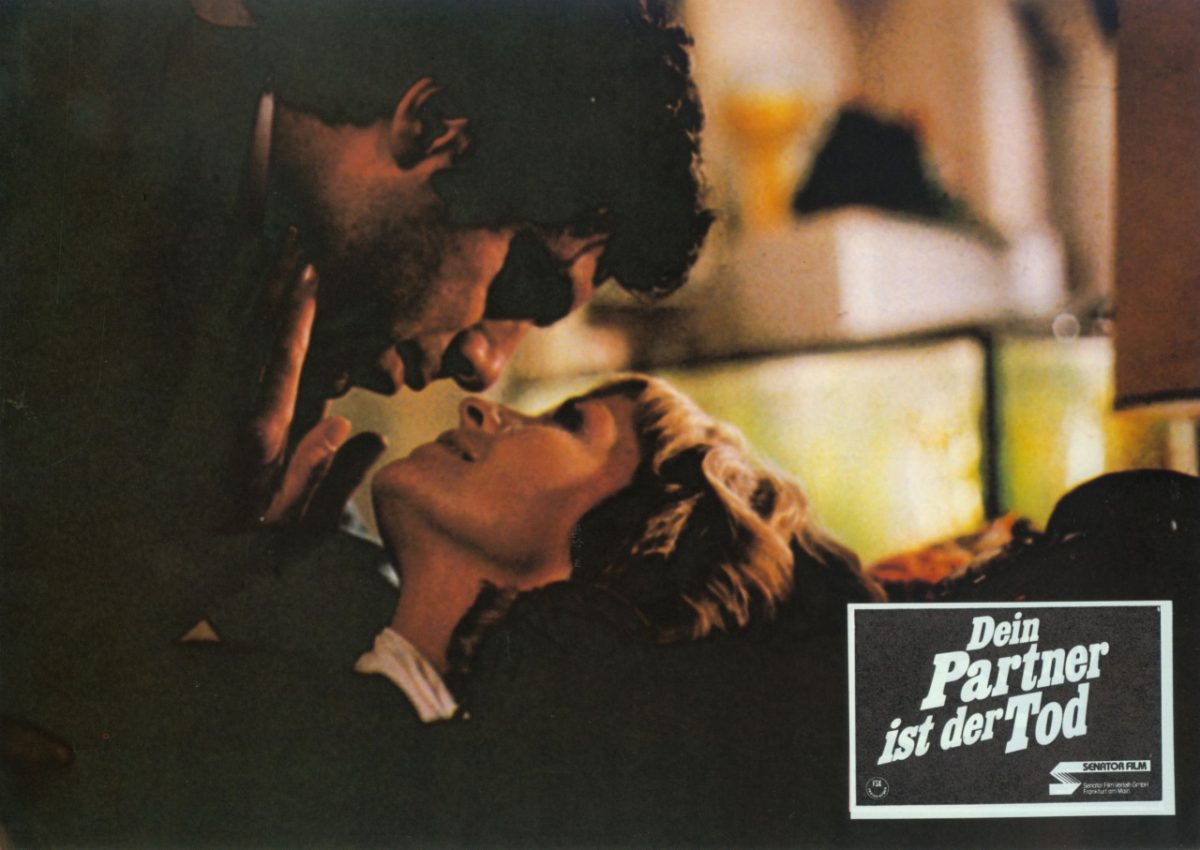
EG: Well, in a way it’s about integrity, which seems sort of peculiar. I’ve done a lot of things, especially Little Murders, something like that where I didn’t understand it. And people live lives – and you know this – they live their life and don’t understand what they’ve done or what they’re doing. But you’ve got to live it and experience it and then deal with it to make the adjustments.
KM: It does also extend to this movie where Miles is striving to have a better life…
EG: Better life? He’s striving to have a life! He’s the keeper of the vaults who cannot have a relationship with the girl he’s attracted to. And then he goes through this. The key in the jar of jam and then it getting thrown out and him having to run after the garbage truck…
KM: You’re always so great, so unique as a romantic lead. You have this magnetism that’s all your own
EG: Aw, that’s so kind of you. But he [Miles] was an interesting guy! It was way off center. I remember the clothes that they made for me. In the picture they attired me very well. And my apartment was interesting. Those details. The chess game. It was someone living in his head
KM: And then getting involved with the lovely Celine Lomez, which adds another layer and another attraction…
EG: It gives him some confidence. He didn’t have any confidence! And, also to go against that creepy guy that Christopher played. It gives him some balls.
KM: The chemistry is there with Susannah York where you think, why is she so interested in the bank manager?
EG: Well, listen, you know this: She needs some degree of security. And the bank manager was a youngish guy and [Michael Kirby] was a good actor. There was no chemistry between the manager and she, but there was some degree of security, something that was predicable. But it was unpredictable with Miles. I really appreciate that you’re going into the romantic part of it. It is quite romantic, the movie. The whole case is a very interesting metaphor in getting someone to come out and get involved in life.
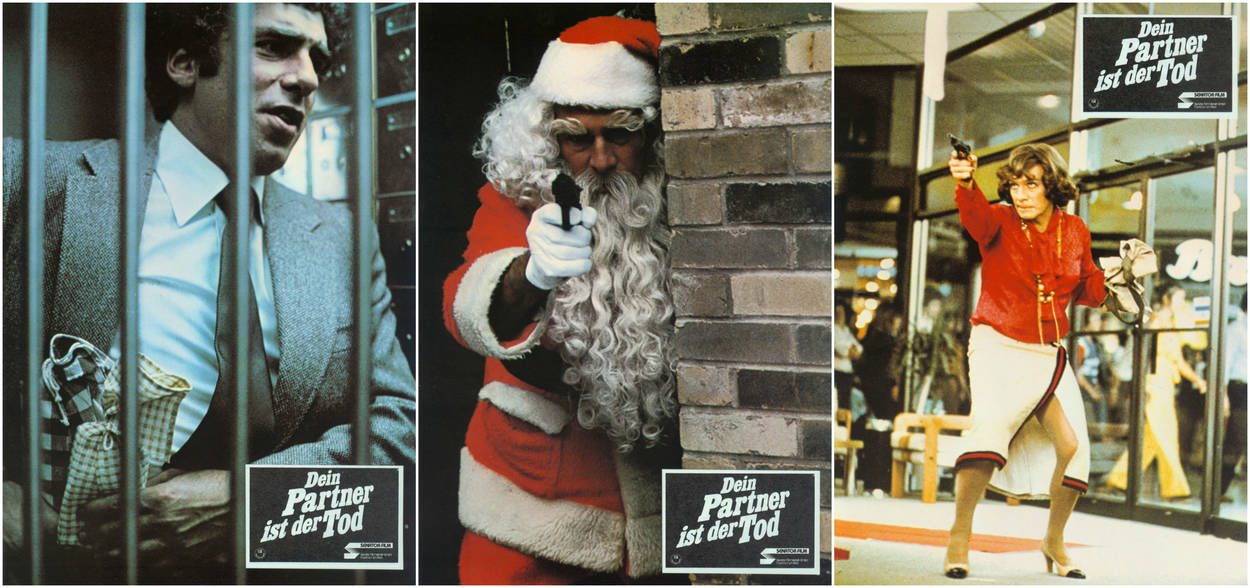
KM: Plummer is really terrifying throughout the film, but by the end, he’s really under your thumb and seems almost vulnerable, which is interesting to think of then that he changes up from dressing as Santa Clause to dressing as a woman…
EG: Well, that was his thing. I can’t think of why necessarily. I’m sure you’re right. But he being dressed as a woman was just so creepy… and Plummer was a very very creepy guy in that part. Christopher was great. But [initially]… I had wanted Mick Jagger to do Christopher’s part. Mick, in honesty, is not so creepy. Or, David Bowie. I wouldn’t have necessarily seen Mick or David Bowie act. It would have been like, “I don’t know these people? Who are they? These are people from space.” But Christopher was great and he gave me a touch of class.
KM: Miles is one of your great characters. Did you at all approach him differently than other roles you’ve played?
EG: I approach everything from the same place and in the same way. It’s like what Alfred Hitchcock had said to me: It’s all music so therefore it’s a composition…
